Population Biology 1
1/41
There's no tags or description
Looks like no tags are added yet.
Name | Mastery | Learn | Test | Matching | Spaced |
|---|
No study sessions yet.
42 Terms
What is a population?
Group of individuals of the same species in a defined area
What is a community?
would include all organisms in a defined area.
What are the two useful metrics used to find the changes in the size of a population?
r and K
What is the parameter?
r
What does the parameter r mean?
per capita rate of increase per unit time
What is per capita rate of increase?
A measure of the instantaneous rate of change of population size per individual.
Instantaneous birth rate
b
instantaneous death rate
d
What is the Equation to find per capita rate of increase?
r = b-d
What does the parameter K represent?
population size; carrying capacity of the environment
In a close population, do individuals leave or enter the population?
No.
what is the letter for intrinsic rate of increase
r
When does K occur? (carrying capacity)
the population has reached its maximum level that can be sustained by their environment.
At K will births equal death?
yes
at K does the population remain nomically stable?
yes
What are the 5 protist used in lab?
paramecium caudatum
paramecium bursaria
spirostomum ambiguum
blepharisma lateritium
Didinium nasutum
How does paramecium caudatum look like?
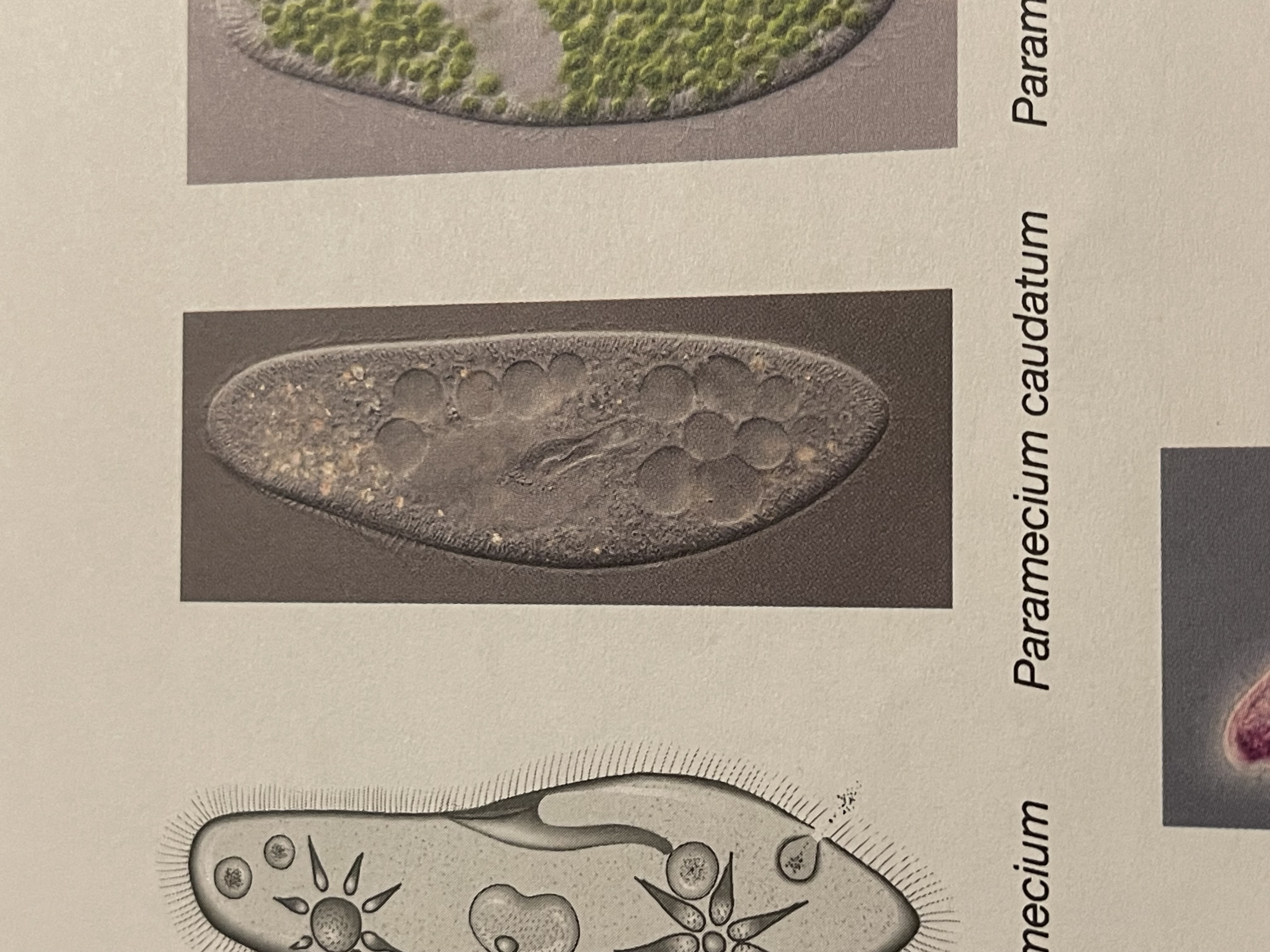
How does paramecium bursaria look like?
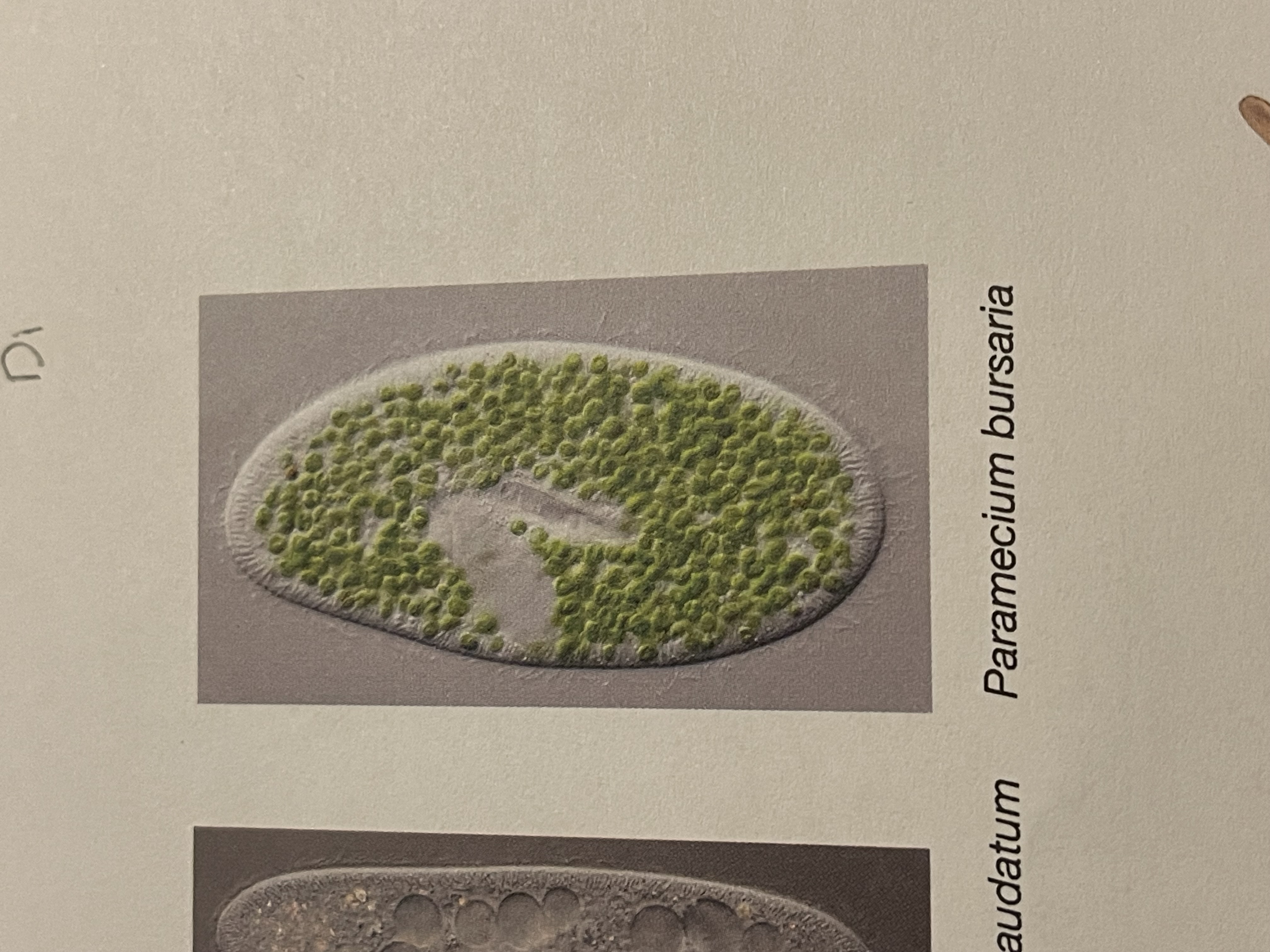
How does spirostomum ambiguum look like?
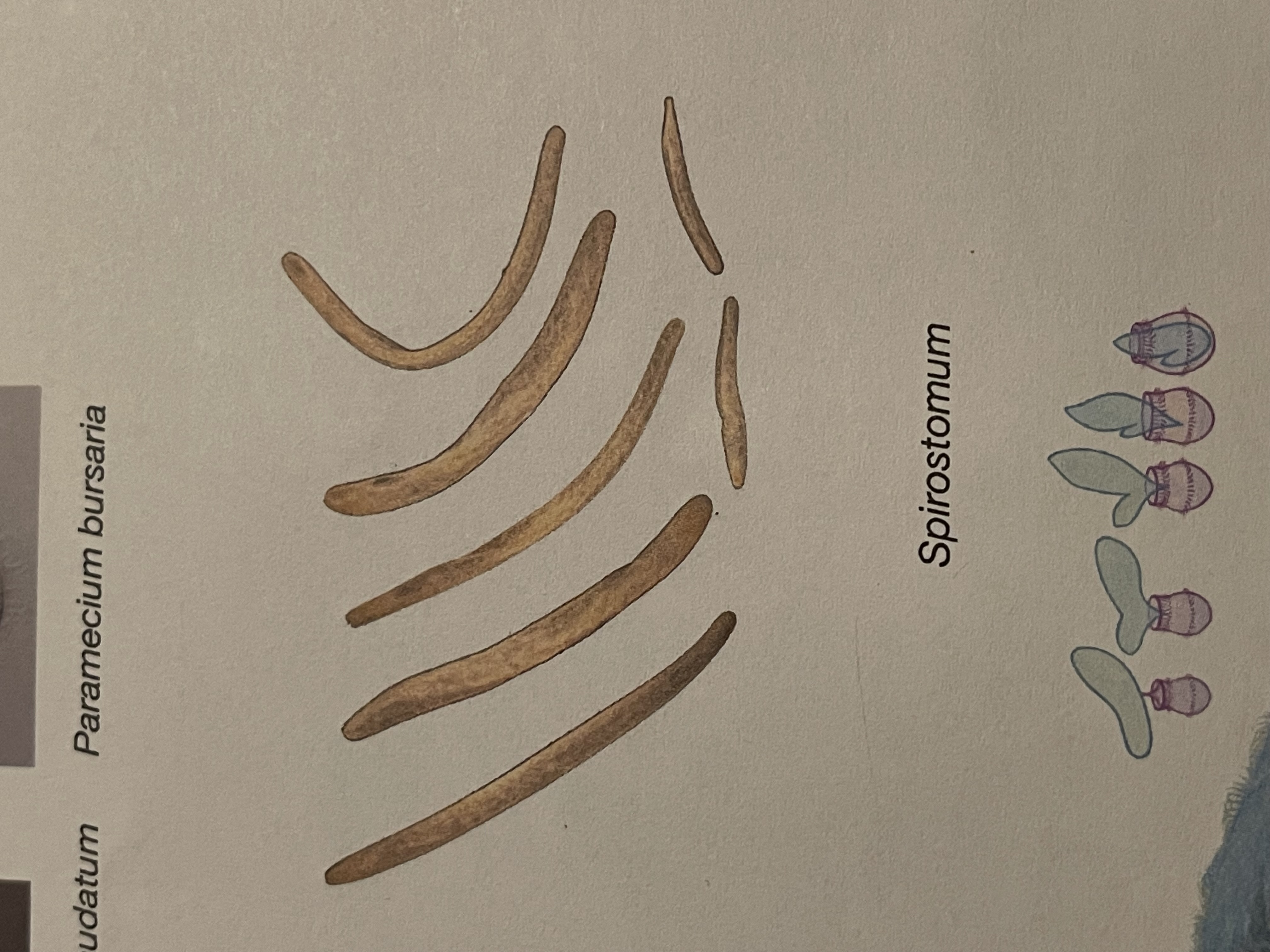
How does blepharisma lateritium look like?
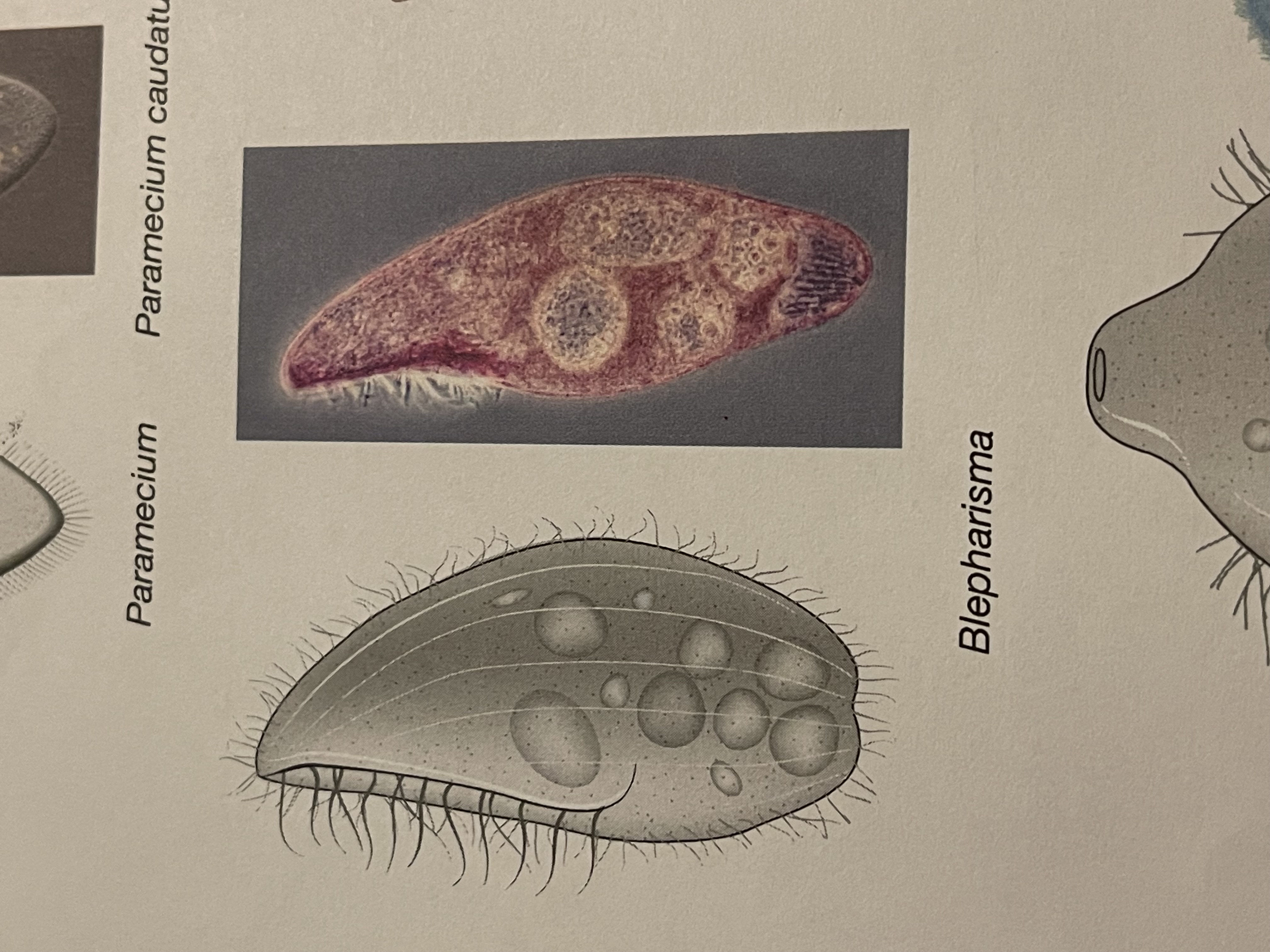
How does Didinium nasutum look like?
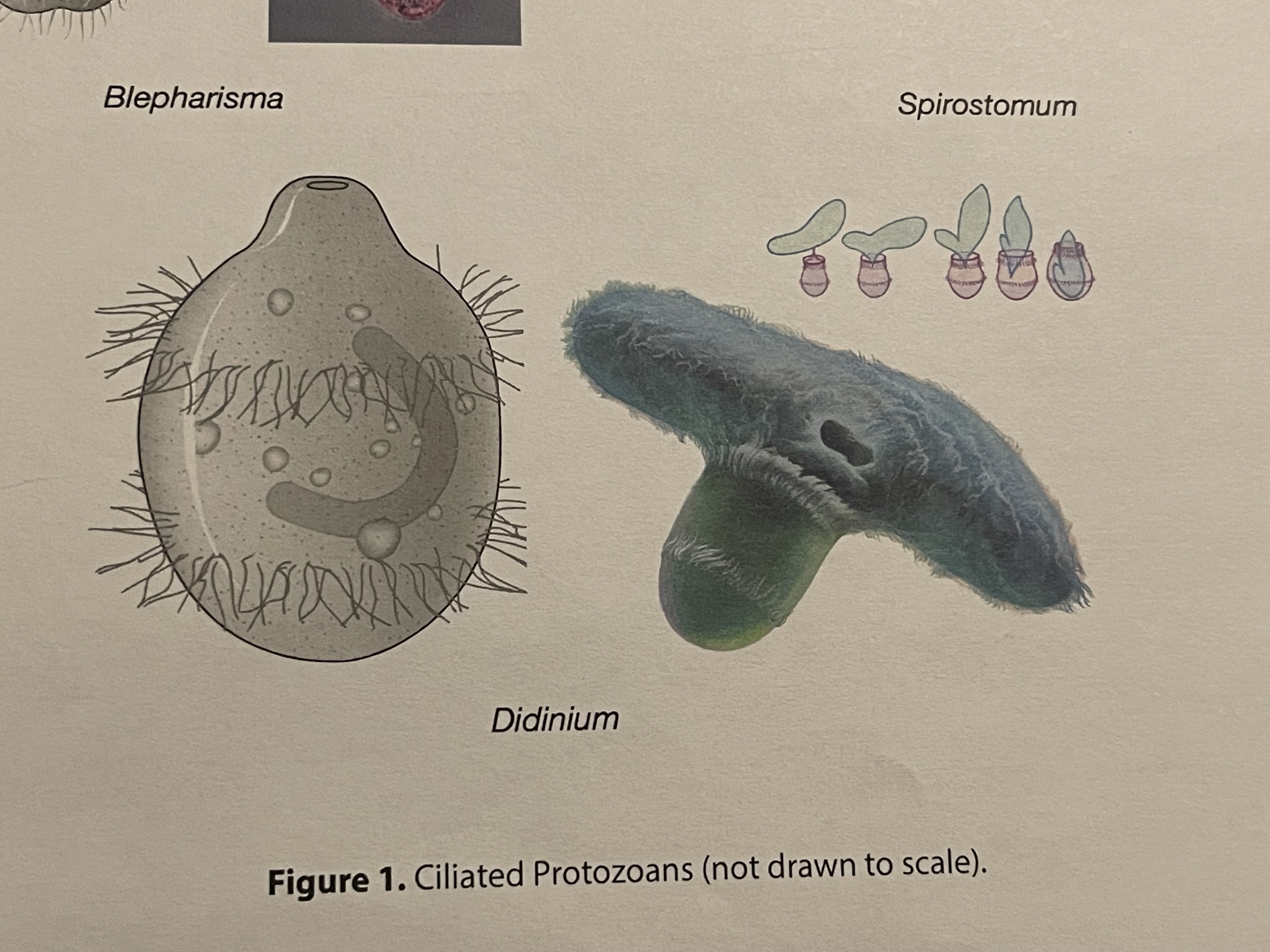
What is the size of Paramecium caudatum?
250-300 mm
What is the size of Paramecium bursaria?
100-150 mm
What is the size of Spirostomum ambiguum?
2-3 mm
What is the size of Blepharisma lateritium?
-175 mm
What is the size of Didinium nasutum?
2 girdles of cillia
Draw Paramecium caudatum
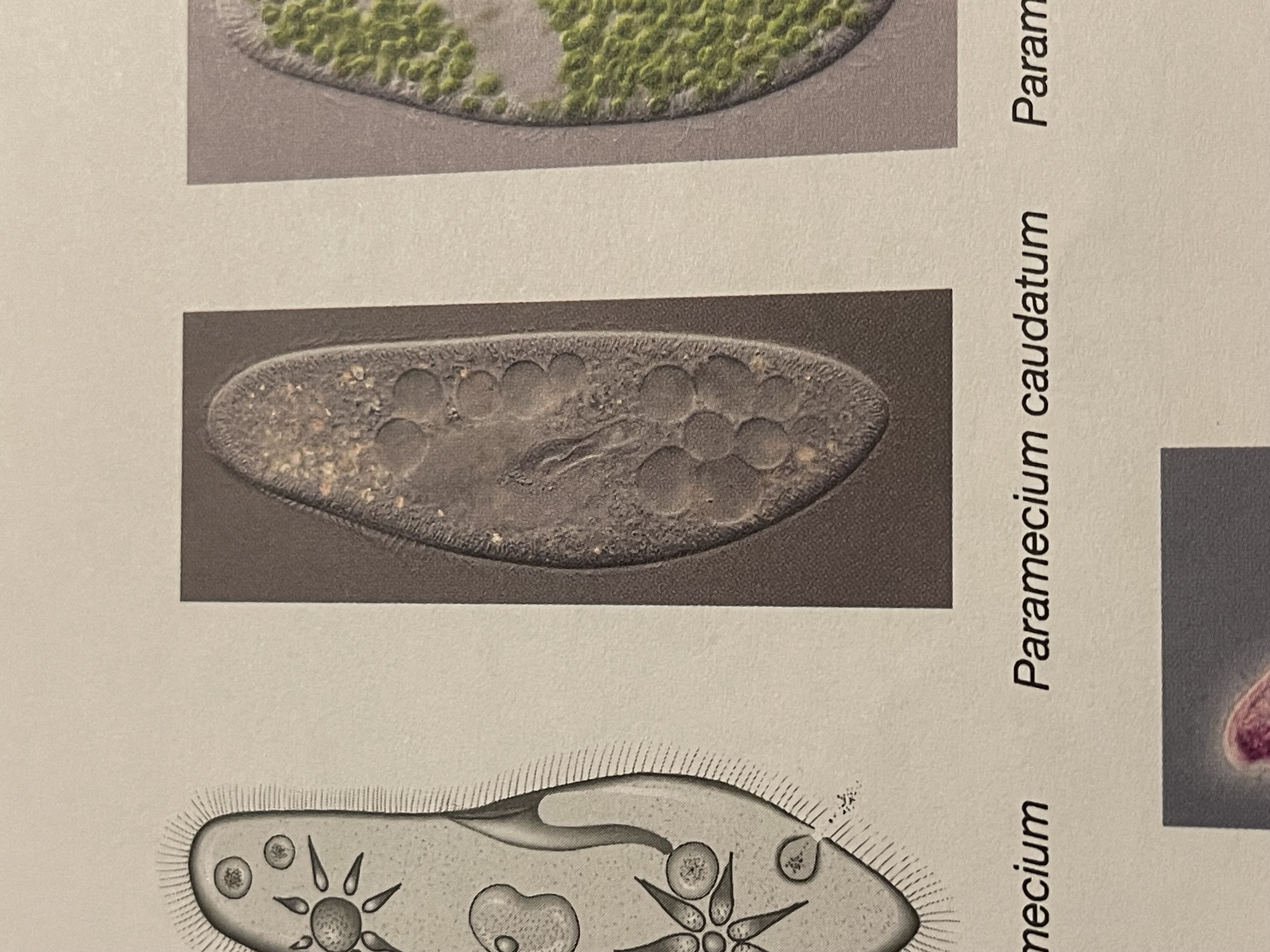
Draw Paramecium bursaria
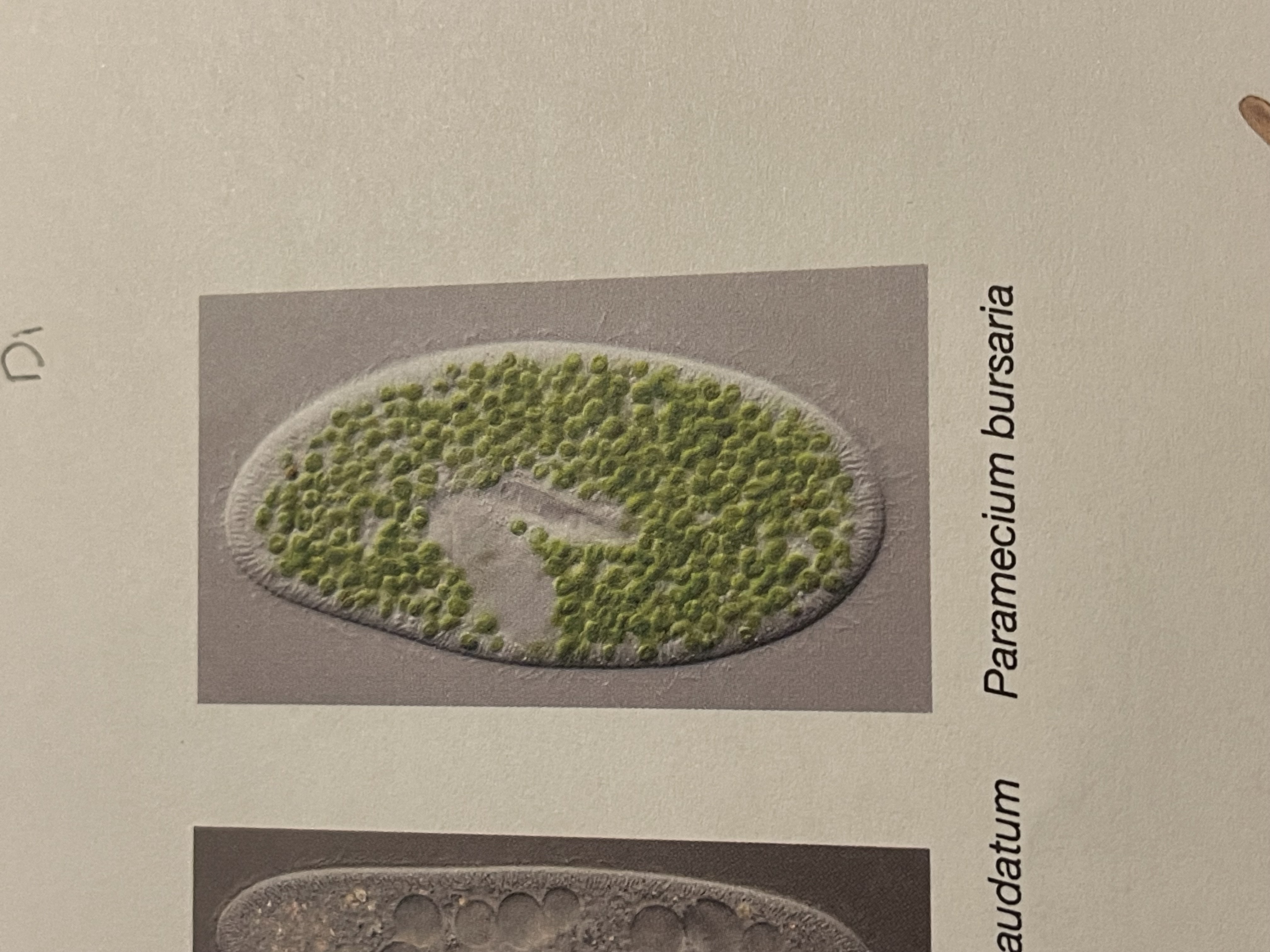
Draw Spirostomum ambiguum
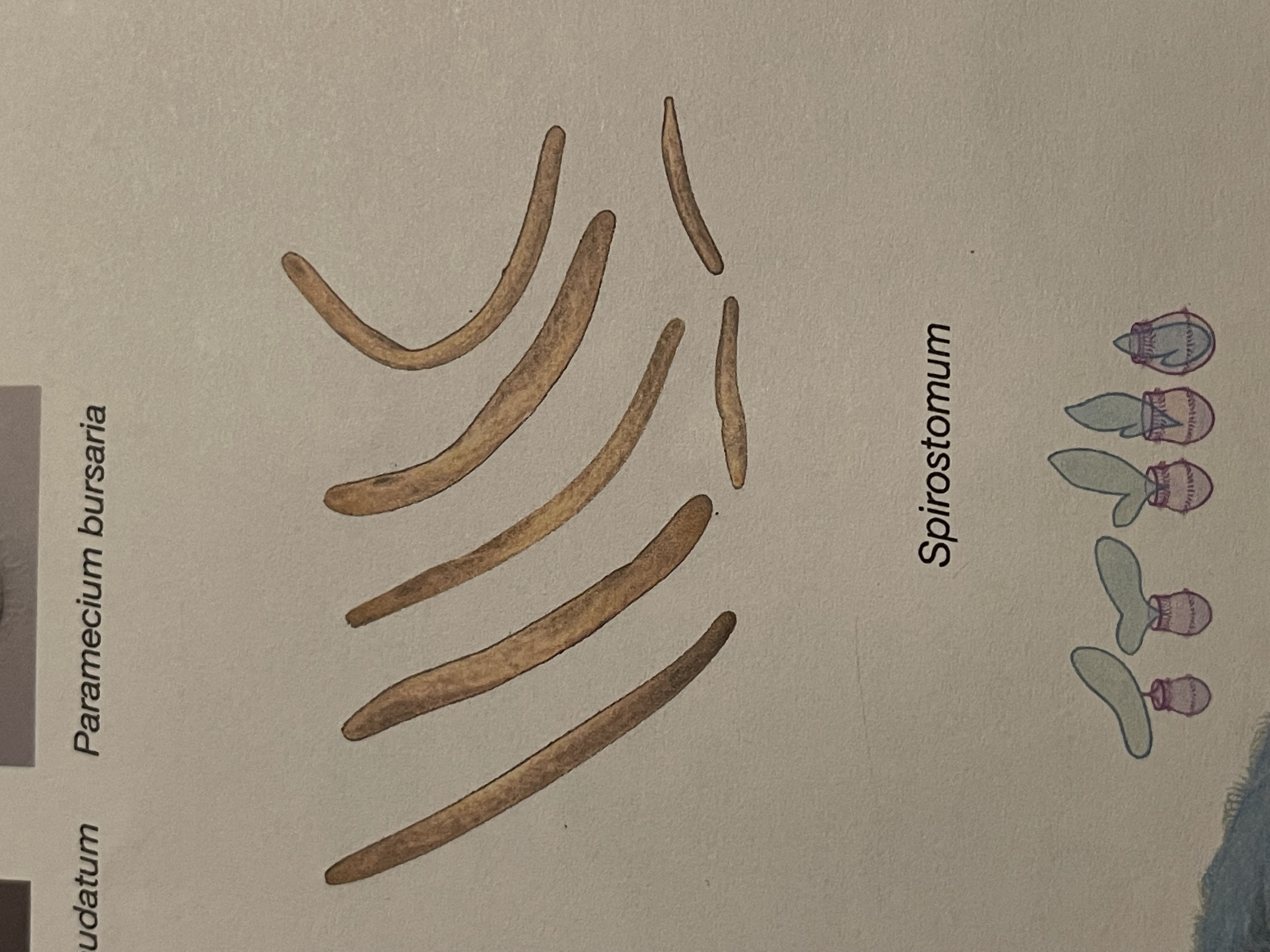
Draw Blepharisma Lateritium
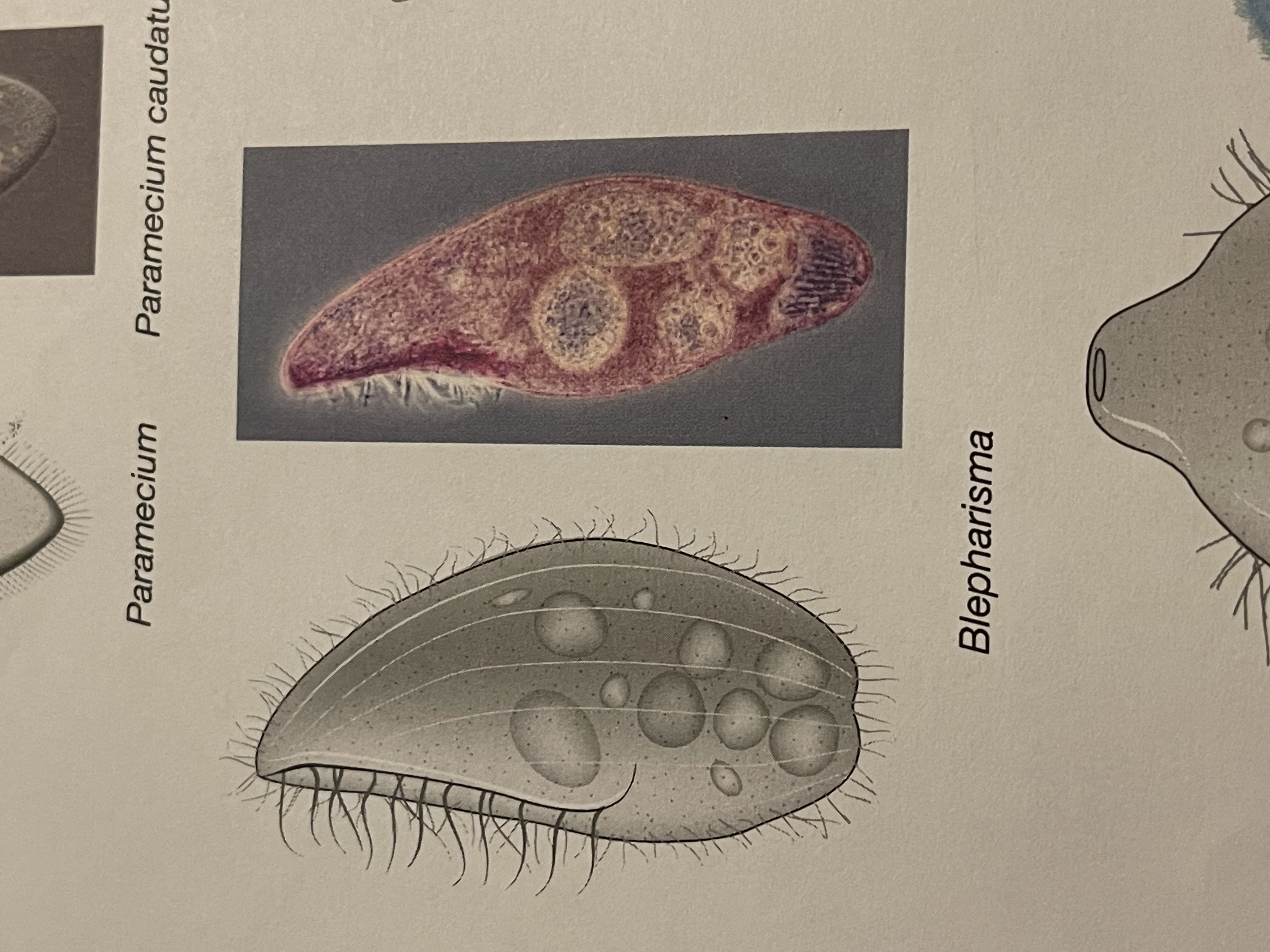
Draw Dinium nasutum
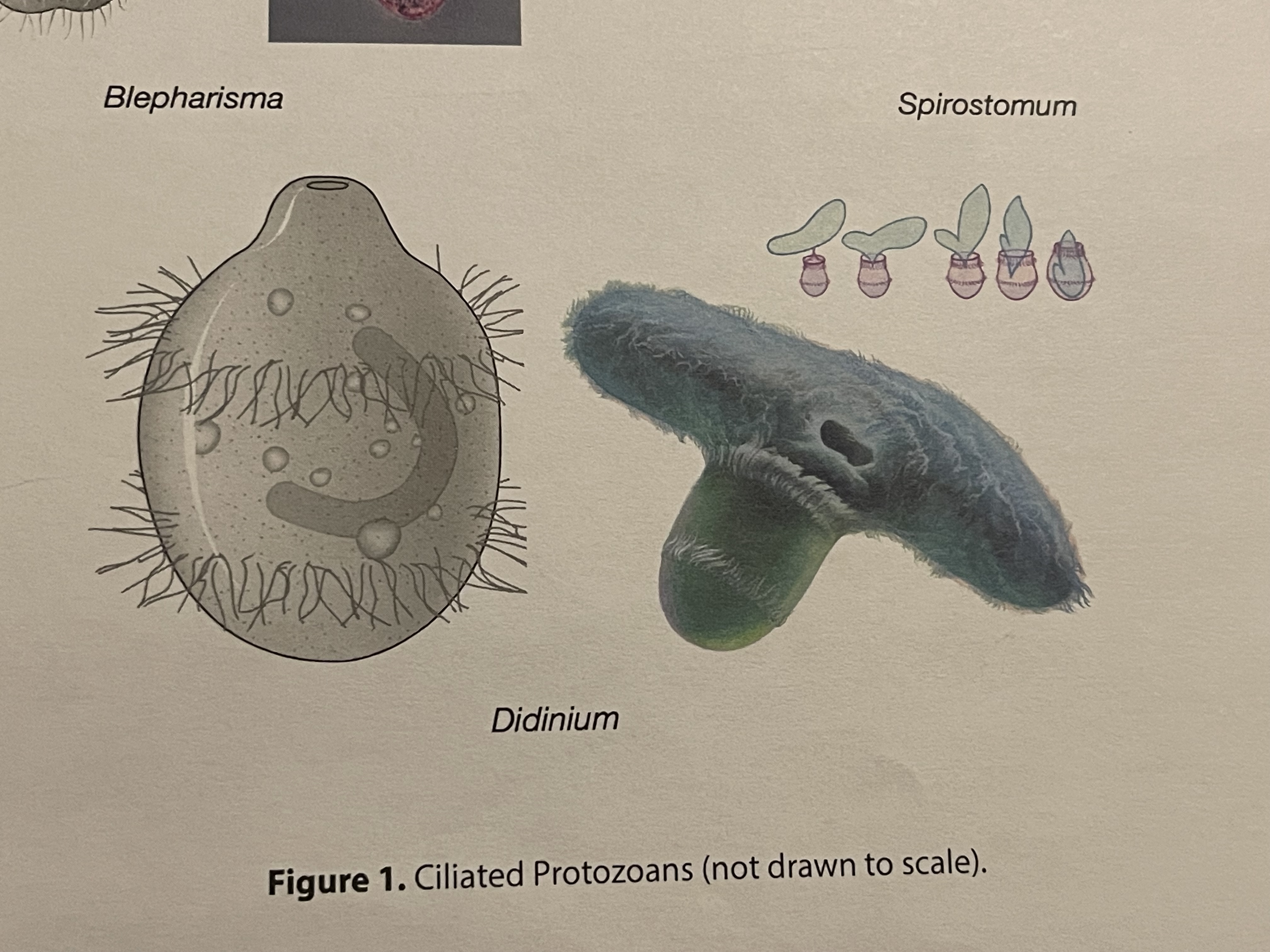
What are the three ways to determine what a population size is?
Direct count method
Plot sampling
Mark recapture
What do you do in direct count method?
Count every member; takes the longest.
What do you do in plot sampling?
If working in a large area; divide into small then use direct count method.
What do you do in Mark recapture?
capturing as many individuals in a population as marking them (without harming them) and releasing them.
later, the unmark and mark will mix
How much tubes are we using for the expirement?
6
for the experiment what are we putting in the tubes?
3 with species A, 3 with Species A+B
What are we feeding the species?
a seed and liquid
How much water is placed?
39 mL
How much dilussion are we putting?
1 mL
How many individuals are counted in this expirement?
200
What should be the total solution in each vial?
40 mL